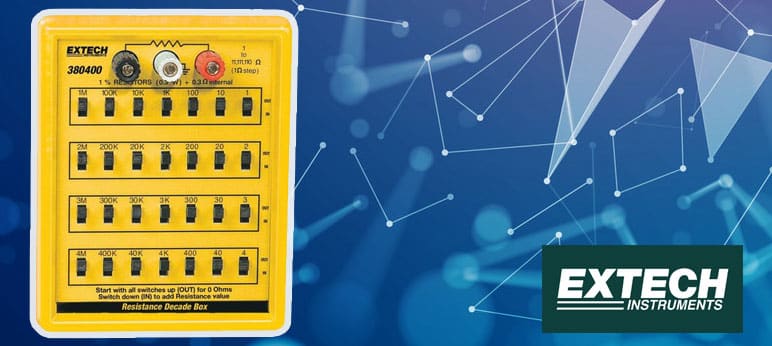Decade Resistors: A Timeless Tool for a High-Tech World
In the world of electronics, precision is not just a preference; it is a fundamental requirement. From the micro-components in a smartphone to the critical systems in an aircraft, every device’s performance and reliability depend on the accuracy of its electrical parameters. To achieve this level of precision, engineers rely on foundational tools, and few are as enduring and versatile as Decade Resistors. While it may seem like a classic, almost old-school piece of technology, its role is more critical than ever. In modern applications—where exact resistance values are essential—Decade Resistors calibration ensures accuracy, stability, and reliability. From fine-tuning sensitive measurement instruments to validating cutting-edge electronic systems, this process remains indispensable as industries push the boundaries of innovation.
What is a Decade Resistor?

A decade resistor is an electrical tool. It gives you a specific, adjustable value of resistance. People often call it a “resistance box” or “decade box.” Its name comes from its design. It uses a series of switches arranged in a logarithmic scale. They are in multiples of 10. For instance, one dial controls 1-ohm steps. Another controls 10-ohm steps. A third controls 100-ohm steps, and so on. You can combine the settings on these dials. This allows you to quickly set an exact resistance value. You can go from a tiny fraction of an ohm up to millions of ohms.
A decade resistor uses a set of high-quality, fixed resistors. When you turn a dial, you simply switch between these known, stable resistors. This design ensures superior accuracy and stability. Therefore, it is the best tool for jobs where precision is crucial.
Core Uses of Decade Resistors
A decade resistor’s main job is to act as a gold-standard reference. Here are its core applications:
- Calibration and Testing: This is its most important job. Calibration labs use decade resistors as a fundamental standard. They use it to verify and calibrate other measuring tools. Examples include digital multimeters and LCR bridges. By providing a known, accurate resistance, it ensures those tools give correct readings. This helps maintain a critical chain of traceability to national standards.
- Circuit Simulation and Prototyping: Engineers use a decade resistor during the design phase. They use it to simulate a component with variable resistance. This allows them to test how a circuit behaves under different conditions. They don’t have to solder many fixed resistors. In short, this saves time and makes prototyping easier. It helps them create circuits that work better.
- Research and Education: A decade resistor is a standard tool in university labs. Students use it for hands-on learning. They experiment with basic laws of electricity. This gives them a practical understanding of electrical principles.
High-Impact Application: 5G and High-Frequency Electronics
The Challenge of High-Frequency Electronics
At high frequencies, electrical signals behave very differently than they do in standard circuits. Signals in 5G and other advanced systems are prone to issues like skin effect, where current travels only on the outer surface of a conductor, increasing its effective resistance. Additionally, unwanted electrical properties, known as parasitic inductance and capacitance, can arise from the circuit board itself, interfering with the intended signal path. Because of these phenomena, even a slight error in a component’s resistance can throw off the entire system, leading to data corruption or a complete loss of signal. This is why absolute precision is non-negotiable.
The Role of Decade Resistors
Decade resistors play a critical role in these systems. They are used to calibrate the specialized and expensive test equipment for 5G. These tools include Vector Network Analyzers (VNAs), which measure the properties of electrical networks, and Spectrum Analyzers, which show the frequency of a signal. These instruments must be validated against a perfectly known standard to ensure their readings are accurate. A precise decade resistor provides that stable reference, acting as the “gold standard” for the test equipment. Without it, engineers could not confidently confirm that their 5G parts meet strict performance rules. This helps ensure reliable, high-speed data.
Furthermore, engineers use decade resistors to test new 5G devices during the design phase. They can simulate different resistance and impedance conditions. This helps them optimize circuit layouts to minimize signal loss and avoid unwanted interference. By quickly adjusting the resistance, they can see in real time how a circuit responds and make informed design decisions. This shows how a classic, trusted tool works directly with cutting-edge technology. It helps engineers ensure that every component in a 5G system works exactly as it should, leading to a robust and dependable network.
The Hot Trend: Digital Traceability and Blockchain Calibration
The paper calibration certificate is being replaced. The hottest trend in metrology is a move to a more secure and efficient digital system.
- Digital Traceability: This system replaces traditional paper certificates with a complete digital record. When a Decade Resistors calibration is performed, every detail is securely saved—including the results and the reference standards used. The information is stored in an encrypted digital file, creating an unbroken chain of data. This approach provides instant access to historical records, simplifies quality audits, and eliminates the risks associated with misplaced or damaged paper certificates.
- Blockchain Certificates: Some companies are adopting blockchain. This adds a layer of trust. A blockchain is a secure, public record. When a certificate is ready, a unique digital fingerprint of its data is created. This is stored on the blockchain. Once there, it cannot be changed or deleted. This technology stops fraud in documents. It gives you a new level of security. Anyone can check the certificate’s authenticity. They just need to scan a QR code.

Conclusion
A decade resistor is a classic tool, but it is far from obsolete. Its precision and reliability make it essential for advancing new technologies. For example, it helps guarantee the safety of sensors in self-driving cars and certifies the performance of 5G networks. Today, this trusted instrument has evolved with modern digital solutions. Through Decade Resistors calibration enhanced by blockchain, accuracy and traceability are taken to a higher level. This demonstrates that while technology moves forward, the fundamental rules of engineering remain timeless. A humble decade resistor continues to play a vital role in building a more accurate, secure, and reliable future.



